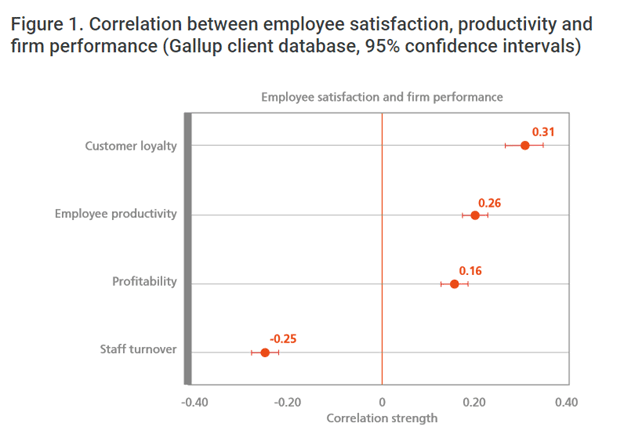
This phrase was something I heard a lot last year.
In March 2020, the government of the Dominican Republic closed its airports to limit the spread of COVID-19. This decision left me, (vacationing and originally from Florida with "conversational" Spanish skills if we're being generous) stranded and isolated with no idea of how or when I might be able to return home.
As you might expect, there were numerous logistical challenges to navigate, both for me personally and for our growing team. Like everyone else, our company had to adapt to each individual’s rapidly changing needs. I was lucky, in that I work with a team that approached these challenges with empathy and that our Cloud infrastructure was prepared to shift abruptly to a remote work environment, also known as work-from-home (WFH).
With all of my files and solutions available in our Cloud environment, the ability to connect on Teams, and a relatively stable internet connection, we were able to weather the storm and grow our business 40 percent in 2020. As it would happen, the shift to pure WFH created new opportunities for growth both with clients and internally.
For the 18 months (and counting) that I've lived in the Dominican Republic, I’ve been able to thrive amidst the chaos. And I’m not alone, as numerous organizations have found new lanes of business as a result of their organizational agility.
As the world re-settles, there are conversations going on about how the broad culture of work will react to the great hibernation from the office that led businesses to adopt new practices and technologies in response. Most accept that some element of WFH will now become commonplace, but many are also struggling to determine how to integrate these new expectations into their regular business practices.
Because of this challenge, some have even resorted to drawing a hard line, expecting all staff to return to the pre-pandemic 9-5 culture with no interest in continuing remote work. For example, detractors of WFH claim that there is a direct, negative correlation between efficiency and collaboration and whether or not teams need to physically occupy the same physical space. If we want to be our best, they argue, we need to be in the office. But is that the case, or are there clear benefits to taking the harder path and what are the benefits of the more challenging and holistic alternative of adopting infrastructures that enable and empower hybrid or remote work environments?
WFH is a tool in an organization’s tool belt, and not adopting at least a hybrid model that involves opportunities for remote work would be akin to using your wrench over the more obvious hammer when you need to pound a nail. Adopting infrastructure like Cloud workflow technologies, video-conferencing solutions and defined business practices serve a variety of benefits to organizations willing to do so. By implementing long-term WFH strategies, businesses can have happier and more fulfilled staff, exciting new growth opportunities and create insulation from future risk.
Proper WFH Can Enhance Positive Corporate Culture
As the pandemic wore on, discussion began surrounding the idea of mental health and proper work/life balance. A Harvard Business School study found that remote workers put in on average an additional 48.5 minutes per work day, with some of that behavior driven by fear of not being productive in a time when losing one's job was an ever-present danger. Many equipment finance brokers experienced a deluge of applications and struggled to keep up, putting even more pressure on their already taxed staff. This says nothing of the various challenges mothers, fathers and those with sick or disabled loved ones had to wrestle with in the midst of crisis, nor of the additional social challenges occurring all over the world.
In response, we adjusted. We structured our days around the new 10-second “commute,” swapped our desk toys for knick-knacks in our “Zoom rooms” and built-up infrastructure around our new idea of being in the office. We also discovered a new language to discuss mental health and even equality in the workplace. As a result, there is greater focus on empathy as a cornerstone of an organization’s business practices. This has turned out to be one of the more positive paradigm shifts, there’s a direct correlation between employee satisfaction and productivity.

During the early months, I found myself regularly putting in 9–10-hour days, but frankly never felt much “Zoom fatigue.” In my case, this was the result of a combination of positive personal choices and the unique and empathetic way my team helped me manage my situation. In fact, most of our team members found themselves with specific challenges that required unique solutions, and a “one size fits all” approach to managing the impact on business just didn't make sense. The pandemic has taught us that some experiences are truly universal, and also that we can’t ignore just how colorful is the spectrum of human experience.
To that point, the experience has offered lessons in the value of the individual. We learned that different people thrive in different environments; while many of the extroverts of equipment finance struggled by being suddenly deprived of the useful sales tool of sharing drinks or a round of golf, introverts were empowered by working in a space they controlled. There are whole equipment finance organizations that have been reinvigorated, leveraging this new energy to unprecedented success. Just as office workers were abruptly ripped from the comfort zones they may have created in their office environment, businesses risk depriving staff of the mental and physical health benefits that have been gained by some of their teammates in the last 18 months.
Take Advantage of a Broader, More Diverse Talent Pool
When the topic of recruiting is discussed in equipment finance circles, a common joke is that no one ever independently chooses to join the industry. People routinely choose to go into investment finance, but few explicitly decide to enter and grow within the ranks. Rather, they take a position with a reputable company, learn the trade, find their niche and build their network, and before you know it 20 years have gone by.
However, there are downsides to this status quo, too. While we might feel that staff retention in equipment finance is a strength, “best kept secrets” often struggle with the critical aspect of adding new talent.
Earlier, we discussed that an individual worker’s health and value to an organization are more prized than ever. That is true also for how the worker values their own contributions, and WFH has become a common demand from job seekers in 2021 and is showing no signs of slowing down. As job requirements skew more heavily towards interacting with technology and new solutions, companies must grapple with the reality that WFH must be an option if they desire attracting top talent.
But adopting WFH practices does more than check a box on the list of minimum requirements; it is opening doors to new and exciting options for businesses. Continuing with the recruiting example, business leaders could recruit talent from anywhere in the world if those recruits can help the team. Teams located in large cities with high costs of living can supplement with remote positions in places where staff can demand a lower salary, adding critical capacity more immediately and without disrupting office culture.
But the benefits found by adopting broader horizons applies to more regionally minded businesses as well. In an industry defined by the delicate balance of efficiency with connection, businesses can leverage WFH technologies to establish deeper and more fruitful relationships with customers and partners. By encouraging customers to favor video calls over phone, we have anecdotally found that customers leave those interactions feeling more satisfied and “heard.”
It’'s easier to build a personal relationship with someone that you let into your space; something we all do every time we fire up a Zoom. While not all industries benefited from a broad adoption of video call technology, it’s become a valuable tool for the equipment finance team that has embraced the switch. And it’s no secret that customers that have a positive relationship with a brand will more frequently bring repeat business, and employees that feel connected are retained longer.
Imagine a world where an applicant would be guided by an AI assistant through the leasing process and document exchange up until the point when the customer decides they want to connect to a person to ask some questions before signing off. Instead of asking the customer to call a number to reach a new person over the phone, the integrated set of systems that is already a natural fit for companies using WFH intelligently sends their information and a summary of their needs to a rep and connects to the customer through a Zoom call in less time than it would have taken the customer to dial in. In an instant, that customer feels engaged in the process and important enough that this company would reach out to them in such a smooth and intimate fashion. And the organization has the benefit of building a long-term brand relationship with that customer and their community.
Lastly, diversity of thought has long been understood to be a driving force of innovation. Organizations that are seeking to evolve and grow should be prepared to bring in fresh blood that can add new ideas or even new offerings. By adopting WFH solutions, new teammates can theoretically be added from anywhere in the world, giving us access to perspectives that we might have never considered. And with more and more companies leaning into being more visibly diverse and inclusive, it’s an opportunity to dramatically broaden the talent pool and allow organizations to add the exact resource they need regardless of where they live!
Insulate From the Risk of Future Destabilization
As we’ve discussed, there are numerous ways a company can leverage WFH solutions and infrastructure that promote organizational growth and contribute to good team mental health. But there’s a critical topic in this discussion that cannot be overlooked. No one wants to consider the possibility of another world event that dramatically changes the economic and cultural landscape like COVID did, but the pandemic itself isn’t yet over and we haven’t completely dealt with all of the new realities left in its wake. One of those truths is that businesses can simply no longer afford to ignore is that all of this (mass exodus of office staff to the home, isolation, systemic institutional failure, etc.) can all happen again in an instant.
If that happens, companies are going to be pressed with the same or similar challenges, and they need the flexibility to adapt as those world conditions change. In this world, fully and completely anchoring your business to your physical office space just doesn’t make sense.
I certainly would prefer to never be stuck in a foreign country again, but no amount of forward thinking is going to prepare me for the moment travel is once again halted. But while I can’t share a comprehensive strategy for surviving and thriving during a global pandemic in a third-world country despite having lived it, I can promise you that my infrastructure will allow me to stay connected with my business from anywhere and at any time. Because of the investments we’ve made in appropriate technologies and practices we’ve adopted; I’m prepared to connect anywhere that I can get a cell signal. That kind of agility, with all of the instability and challenges ahead, is priceless.
As equipment finance companies make firm decisions on whether to or not adopt permanent WFH policies, I do believe we’ll find that those who have chosen to isolate themselves from modern expectations will also isolate themselves from significant future revenue and future talent options, and stubbornly increase the risk to their organizations.
With a little creativity and a minimum of a hybrid WFH structure, companies can begin thriving rather than surviving.